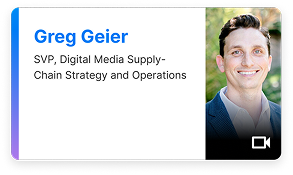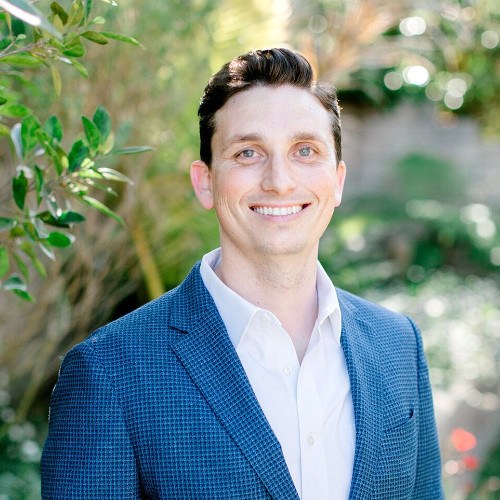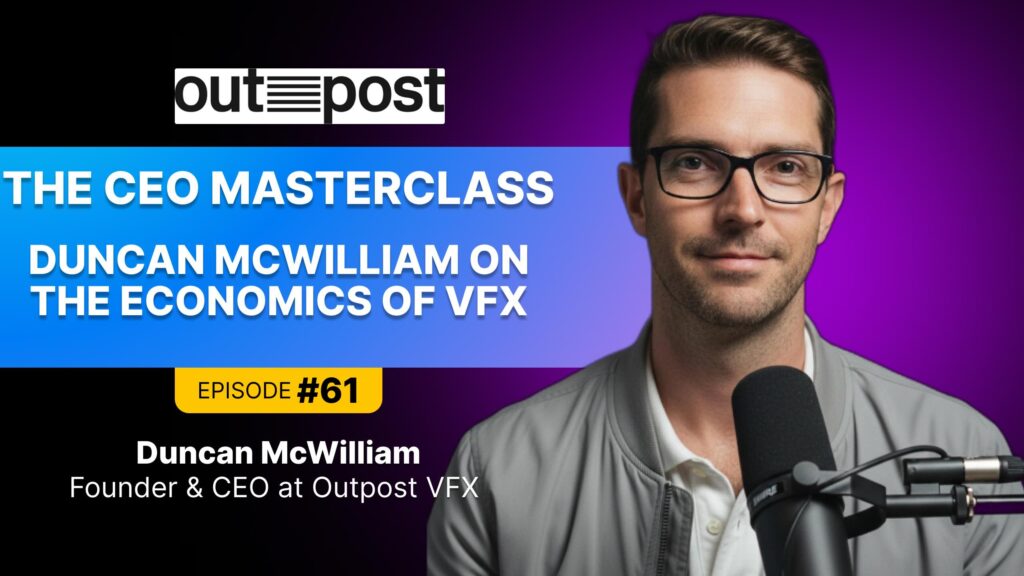Every dollar spent should land on screen.
If we can cut the noise—manual work, redundant systems, shipping costs—we give creators more time, more budget, and more control over their vision.
Podcast Chapters
| Time | Chapter Title |
|---|---|
| 00:00 | Introduction to Digital Supply Chains in Entertainment |
| 05:20 | The Evolution of Systems and Workflows |
| 08:16 | The Importance of Metadata in Content Delivery |
| 16:00 | Impact of COVID-19 on Digital Workflows |
| 25:11 | Challenges in Hollywood’s Technological Adoption |
| 26:47 | Global Expansion of Streaming Services |
| 36:58 | Measuring Success in Digital Supply Chains |
| 43:30 | Future of Supply Chain Transformation |
The promise of cloud isn’t just access—it’s agility.
But for it to work, the tools have to perform better than on-prem. In the edit bay, speed and reliability aren’t optional—they’re oxygen.
Key Takeaways:
-
🎬 Studios Evolve Slowly
Change is happening—but every studio moves at its own pace. -
☁️ Cloud Needs Trust
Camera-to-cloud works only if it’s faster and more reliable. -
🗂️ Metadata Matters
It’s the backbone of discovery, delivery, and monetization. -
🔁 Archives Are Assets
Old footage now powers AI, FAST, and new revenue streams. -
🧠 Start with Stability
Show what won’t change—then introduce what will.
Sound Bites:
🎧 “Archive isn’t the end—it’s the beginning of what’s next.”
🎧 “Metadata is more than info. It’s your content’s passport to discovery.”
🎧 “Cloud only works if it works better than on-prem.”
🎧 “Start with what doesn’t change. That’s how you earn adoption.”
🎧 “Your supply chain is only as smart as the people it serves.”
About Sony Pictures Entertainment
Why Partner With Sony Pictures?
-
🎥 Iconic IP & Global Reach
Home to Spider-Man, Jumanji, and Breaking Bad—with a footprint in 180+ countries. -
🚀 Innovation-Driven
Leading in cloud workflows, AI tools, and next-gen production tech. -
🌎 Worldwide Production Scale
Producing across key global markets with deep local insight. -
🤝 Powerful Sony Ecosystem
Access to synergies across film, TV, PlayStation, music, and hardware. -
📊 Smart + Creative
Combining data strategy with world-class storytelling.
In Conversation with Greg Geier, former head of Digital Supply Chain at Sony Pictures
This is a written version of the Vitrina podcast, summarized for quick reading in a Q&A transcript format.
Interview with Greg Geier on Digital Supply Chains in Hollywood
1. Vitrina: Can you share a bit about your extensive career at Sony Pictures Entertainment and how your role in digital supply chain came about?
Greg Geier: Yeah, I was at Sony Pictures for a little over 18 years, almost 19 years. I started as an intern in the sound department. I was lucky enough to sit on the ADR stages, the Foley stages, the scoring stages, and just see the background of how movies are made, right? From there, I was very lucky early on to have an individual come by and tap me on the shoulder and say, “Hey, you know, one thing to be aware of, one thing to do is that if you ever see a red button and you don’t know what it does, ask, just ask somebody.” And I just took that mentality of asking questions and being intellectually curious throughout my journey. So, you know, from the sound department into more of post-production area working with editorial, bringing video into that fact. Also then being an editor myself, being a tape operator myself and kind of understanding what it means to take in this stuff and deal with technical problems and issues. Then into running a servicing group that did anything from foreign language mastering, anything from mastering in general, IMF mastering, QC, archive, you name it, services, audio conform.
And then being a buyer and having a different view of the world and working with different vendors out there and seeing all of their different aspects of their supply chain as you would and what they needed and how they needed it and the communication structure that was required throughout that and getting to pick up little bits from everybody along the way. Until the last role that I was at with Sony, which was the digital media supply chain, which was really focused around taking an operational approach at building software for the studio. And the idea was we wanted to focus around how we acquired content, manage content, and distributed content.
2. Vitrina: Given your background in systems and workflows, how challenging is it for a large studio to integrate new workflows and technologies, especially when they have established systems that have been in place for years?
Greg Geier: Each studio is very different, right? And organizationally, they’ve shuffled over time and oftentimes you’re left with whatever the systems and technology that that company was using that group was using. But as it evolves, those things are coming closer and closer. You built these very large systems that do a fantastic job at what they do, but it doesn’t necessarily sometimes give you the opportunity to weld in the new workflow and the old workflow, right? These systems were built for a certain way of doing work.
And so now when you’re changing things, you’re changing not only for the individuals, which is the most important, but then you have to think about how they’re doing their work on a day-to-day basis with these systems that they’ve worked on for many, many years. And then you’re trying to make sure as the airplanes in the air make these changes in the backdrop while making zero mistakes on your delivery function, because ultimately your product and the customers are some of the most important pieces, right? From a security standpoint, getting it there, but customer satisfaction from a studio and content delivery standpoint.
3. Vitrina: You mentioned the importance of metadata and how it has evolved from simple tape labels to a critical driver of consumer activities. Can you elaborate on the significance of metadata in today’s digital supply chain, especially concerning transactional platforms and content accessibility?
Greg Geier: Well, I think it’s funny. I think it was back in 2000 something, 2008 something. And I was in my office and my boss at the time ran by and he goes, hey, I just heard this new word card metadata. Hey, look it up. Let’s learn about it. And now we’re in a world where that metadata is what drives consumer activities. So if you have the wrong thing on there as you’re delivering to one of your partners, the wrong synopsis, the wrong title, the wrong whatever, you know, and going even in more depth, you’re now limiting yourself on a transactional platform and being top of the carousel, right? So we’ve gone from this world where, you know, labels were important, labels are still important, they’re just now called metadata, and now there’s so many more decisions you have to make around what you label it.
Metadata is a communication layer and you’re communicating from one part of the supply chain, from the creation of that first image, all the way towards the archive to know that you collected everything, it’s on whatever your archiving strategy is and you have access to it. Because at the other part is the part that I think we’ve learned the most is Archive doesn’t mean the end. Archive is just the beginning for a new product and the way that people are trying to monetize and leverage and continuously come back to.
4. Vitrina: With the rise of AI, what new opportunities do you see for leveraging archival content, especially for training AI engines?
Greg Geier: Well, and if you look at it and start asking a lot of questions with people and a hot topic right now is these AI engines needing training data. And if you think about it, what do I want them to train on? I want them to be ethically trained. I want it to maybe be just trained on my data if I’m a certain studio. What’s really interesting is the archives are going to be the location where the most data is. It’s not the finished product. It’s the archives. There’s a lot of footage there that could be, you know, either constituted for a company to utilize and train their own LLM or to partner with or to potentially monetize as a potential learning vessel for some of these companies.
So there’s these new ideas that are bubbling out there. And again, I think that what a lot of these studios are very lucky about is they’ve done a very good job based off of the amount of time that they’ve had these archives and the amount of time that they’ve been collecting this information, if you will, that there’s more opportunities to continue to use that archive in new and robust ways.
5. Vitrina: The “camera to cloud” conversation has been prominent, especially following the impact of COVID-19 on production workflows. How did the pandemic influence the adoption of remote workflows and camera to cloud solutions, and what were the main challenges and considerations?
Greg Geier: Yeah, it’s a really good question and know, shutter a little bit to go back to that time period. You know, what we recognized was that it’s not how you’re doing it, it’s why you’re doing it. And when those instances, those points of inflection happen, what it really means is people have to rethink the how. I think that, that, you know, the COVID instance, it allowed people to have an opportunity to just think about it differently. And I think the camera to cloud conversation has been there for a handful of years and there’s a couple of aspects.
First off, change is really hard. And I think it also has to be like, what value am I getting out of it? And the value can’t just be, you know, access to, know, you have a lot of people at a different perspectives and they’ve got tools, those tools need to work in that environment better and smarter than they do in my, on my on-prem environment. And if it takes me longer to move media. It doesn’t matter how good you are. I think when you talked about camera to cloud a couple of years ago, there was a lot that needed to change in order for that to be accomplished. But as these tools have become more more mature, less is changing in that workflow, which means adoption is going to happen much sooner.
6. Vitrina: From a digital supply chain perspective, how do you approach convincing stakeholders to adopt new technologies and workflows, especially when facing resistance or skepticism?
Greg Geier: Yeah, you look at it. Early on in my career, I was very lucky to be around some really, really smart folks that gave me a lot of opportunities. And I always thought my value to them was speed. I always thought my value was, hey, they’ve got this idea. Let me figure out how to execute it as quickly as possible. If your process is 100%, for the most part, 80 % doesn’t change. 16 % changes somewhat or slightly, and 4 % we want to change just with entire grit, like with just unbelievable momentum and change. One of the things that I saw, like a complete turnaround is when you started talking about what doesn’t change first, right?
So the big machine that you’re using, the systems that you’re using, the editorial pieces that you’re using, the spreadsheets that you have, none of that changes. And I think if you can add the idea of, providing information to folks in a way that’s that, that they know what changes, what doesn’t change. And you can commit to every conversation you have, build that confidence up of those individuals that are there and make sure those ideas are heard make sure that the that the outcomes are desirable and I think it’s okay to have friction there, right? It’s okay to say hey This is the outcome we agree on the outcome and the how There’s a couple of ways on the how that we might not agree on but let’s test it out and let’s have enough the trusting environment where Where when something’s wrong or something’s right? We’re fixing it quickly and we’re coming together, learning from it, and then adopting the new way of doing it.
7. Vitrina: Hollywood often gets a reputation for being slow to adopt new technologies. What are your thoughts on this perception, especially in light of companies like Netflix producing content in 50 countries?
Greg Geier: Yeah, you know, look, I’ve been on the other side a lot of those conversations and you know, I think what’s hard, you know, and I go back to the organizational structure and I go back to the amount of stakeholders that are involved. And I think when it comes to, when it comes to Sony and it comes to any of the vendors that are, that are out there, you know, ultimately that IP and that relationship with the talent is number one, right? And so you never want to do something that, you know, you’re a custodian in a lot of cases of that content. There’s multiple stakeholders that are part of that and you need to make sure that the outcome is advantageous for every single one of them. And I go back to the organizational structure is, you know, the each studio has their own, you know, verticals, right? I think there’s three, there’s three concepts that people, you know, when, approaching these processes, it’s am I saving you time? Am I saving you money? Am I providing you more control?
Right. And, and I think, on all three of those vectors, every studio has a different point of view of that. Some like to insource a lot of that work. Some like to outsource all of that work. Some people do their outsourcing very strategically around certain aspects of the supply chain. And the interesting part is how does that vendor make that connection with that organizational structure in a way that allows them to come in at scale? I think that’s the hard part is I think a lot of people can penetrate in the smaller sectors, but does it move the needle for anybody?
8. Vitrina: What key metrics or “numbers” should a digital supply chain leader prioritize to measure success, such as savings, efficiencies, or automation percentages? How do you balance innovation with stability in this context?
Greg Geier: Yeah, I think the challenge at times is like, got vision, I have a goal, and I have my objectives. Right? That’s kind of my line. And I think at a high level, everybody has a pretty good vision. I think where you’re going, and I agree with, is that, you know, how do you measure what does good look like? And I think when we say, well, we want to automate something, I say, well, why am I trying to automate it? What is my outcome I’m going for? I want to free up the clicks that people are making on a daily basis and create, you know, what, right? Like, what am I trying to get to? I’m limiting friction. I’m writing time. I’m leaving my cost. And I think you have to go, you know, I think we end up going from vision to outcomes pretty quickly. And we lose a little bit of that goals. I feel like we have to spend more time thinking about what the outcomes that we’re trying to achieve, the goals we’re trying to achieve, than the hows.
9. Vitrina: Considering the rapid advancements in AI, gaming engines, and VFX, do you believe the supply chain is poised for very quick transformation in the near future? What factors will determine the pace of this change?
Greg Geier: Yeah, I it’s a really good question. And to be able to predict the future of and speed, you know, that is all going to be tied to, again, the value of the change. Right. So if I’m making X amount of dollars a year, it needs to be pretty significant for me to make that change. It needs to be pretty significant to drive something. I have to have an extreme pain point or sit there and say, hey, we’ve got a five-year roadmap that’s getting us to X, Y, and Z, right? How could it move quicker? look, if there was an organization that was able to bring together a collective whole of technologies and offer a kind of end-to-end servicing thing as a partnership, in states like a lot of these companies have done over the years, right? That’s why you have a lot of these companies that are out there that will do these servicing and they’ll do the servicing from an end-to-end perspective. The biggest thing I could say is that, you know, being someone who started in the Editors Guild, you gotta educate and bring a lot of this technology to the folks that are doing that work





 Culver City, United States of America
Culver City, United States of America




